2019 Nissan LEAF SV PLUS
It is a nice midsize car that just happens to be electric. Which is a good thing.
#hybrid #electronics #interior
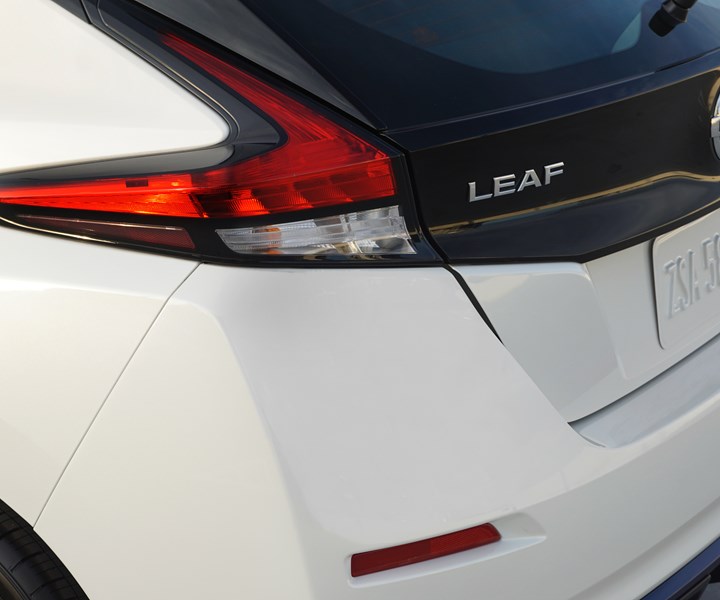
(Images: Nissan)
Arguably in the electric vehicle (EV) space, Nissan was the first mass-market mover as the company made a huge commitment in the form of the LEAF, which it launched in the U.S. market in 2010. This was, it should be noted, an international car, and it was presumably thought that by offering it in several markets the company would realize scale economies, which would drive the cost of the advanced technology to a place where there would be better opportunity to actually make some money on the car.
But that didn’t exactly work out as expected, at least in terms of demand, which proved to be someone anemic (according to the company, it sold >400,000 units worldwide from December 2010 to April 2019 of which ~132,000 were delivered in the U.S.), but Nissan soldered on.
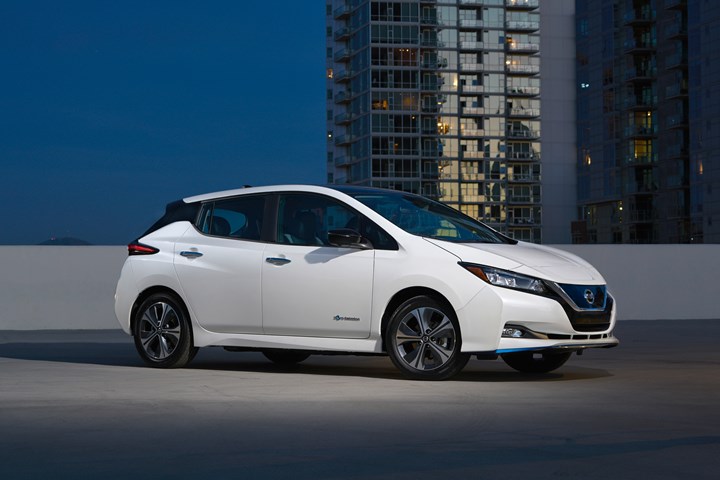
The issue with the initial LEAF was that the range wasn’t all that great, with the company saying that it had “a range of 100 miles (U.S. LA4 cycle) on one full charge to satisfy real-world consumer requirements.” Yet that 100 miles was probably only achieved by dedicated hypermilers or those running the LA4 cycle (which, according to the EPA, in case you are wondering: “The EPA Urban Dynamometer Driving Schedule (UDDS) is commonly called the ‘LA4’ or ‘the city test’ and represents city driving conditions. It is used for light duty vehicle testing. The UN/ECE Regulation 53 refers to the EPA UDDS as the "Test Equivalent to the Type 1 Test (verifying emissions after a cold start).")
Still, the company didn’t relent. And it worked to improve the range. So that the company is now to the point with the LEAF, the second generation configuration of the car, that the EPA range is “up to 215 miles” through the 62-kWh lithium-ion battery, which is available in the PLUS version (for those opting for the standard version of the car it is a 40 kWh battery pack that is said to deliver a range of 150 miles).
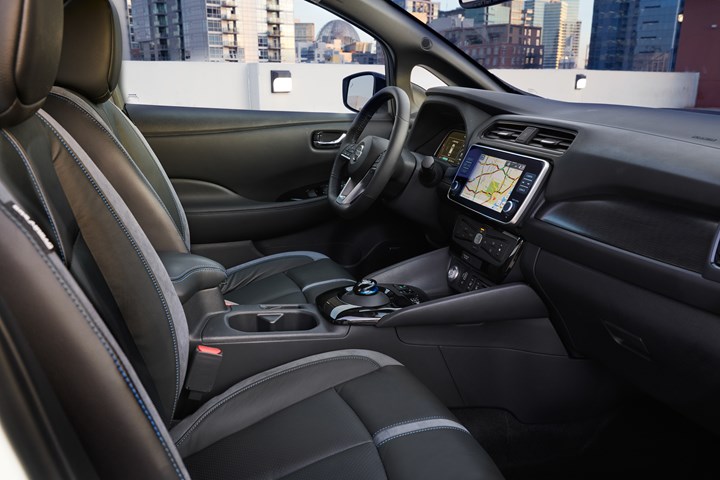
The LEAF PLUS has a 160-kW AC synchronous motors, which translates to 214 hp. But there will has been little question of the peppiness of the LEAF when you step on the throttle. (And speaking of pedals, there is what is called the “E-Pedal Mode” that you can choose to deploy; once you lift from the throttle the regenerative brakes kick in in a remarkable manner, with the point being that you can pretty much do one-pedal (i.e., throttle) driving, although I’d say that you’d have to be willing to give up a smooth decel in your pursuit of saving electricity.)
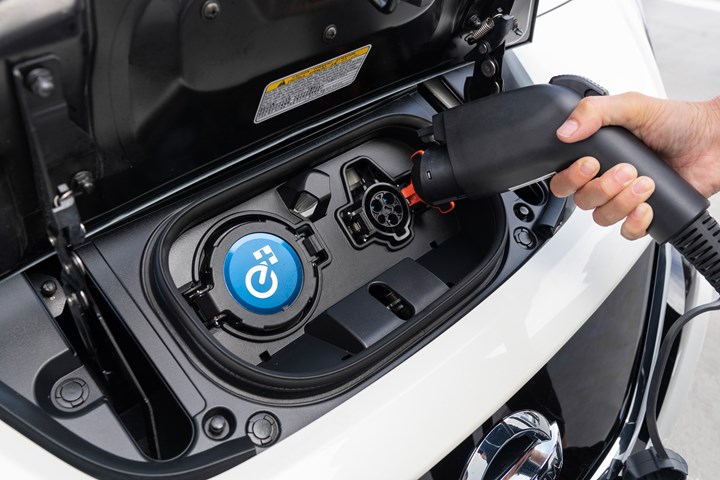
If you were unaware of the charge ports (there are two, one a 6.6-kW version and the other 100-kW capable), you could consider the LEAF a nice midsize car. It has an array of amenities that are part and parcel of today’s midsize vehicles, whether it is safety tech like automatic emergency braking and intelligent forward collision warning, or infotainment like Apple CarPlay and Android Auto and Nissan’s own navigation setup or things like a leather-wrapped steering wheel and adaptive cruise control.
While the range of the vehicle certainly varies depending on the way it is driven—which is the same for a car that runs on liquid fuel—the estimated 215 miles is certainly satisfactory for rolling around town without the dreaded “range anxiety.” However, for longer trips you’d probably be better suited with an Altima.
However. . .the base MSRP for the LEAF SV PLUS is $38,510. According to Nissan, the base MSRP for the most expensive Altima, the Platinum with a 2.0-liter turbo, is $35,180.
Which immediately raises a math problem. But spreadsheets aside, the LEAF is a nicely executed midsize that requires little in the way of compromise.
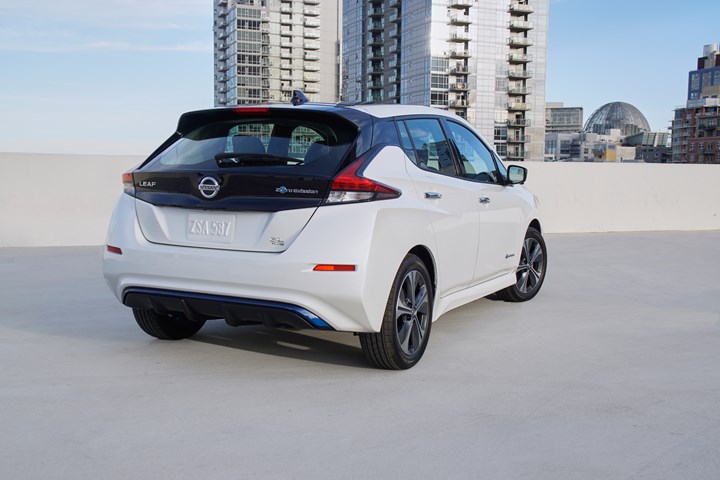
RELATED CONTENT
-
On Traffic Jams, Vehicle Size, Building EVs and more
From building electric vehicles—and training to do so—to considering traffic and its implication on drivers and vehicle size—there are plenty of considerations for people and their utilization of technology in the industry.
-
Honda to Make Hybrids in Thailand
Honda Motor Co. is preparing to launch production in Thailand of hybrid cars and the batteries that help power them.
-
Hyundai Shops for a Partner to Make Electric Scooters
Hyundai Motor Co. is looking for a domestic partner to mass-produce the fold-up Ioniq electric scooter it unveiled at last year’s CES show in Las Vegas, a source tells The Korea Herald.


.jpg;width=70;height=70;mode=crop)